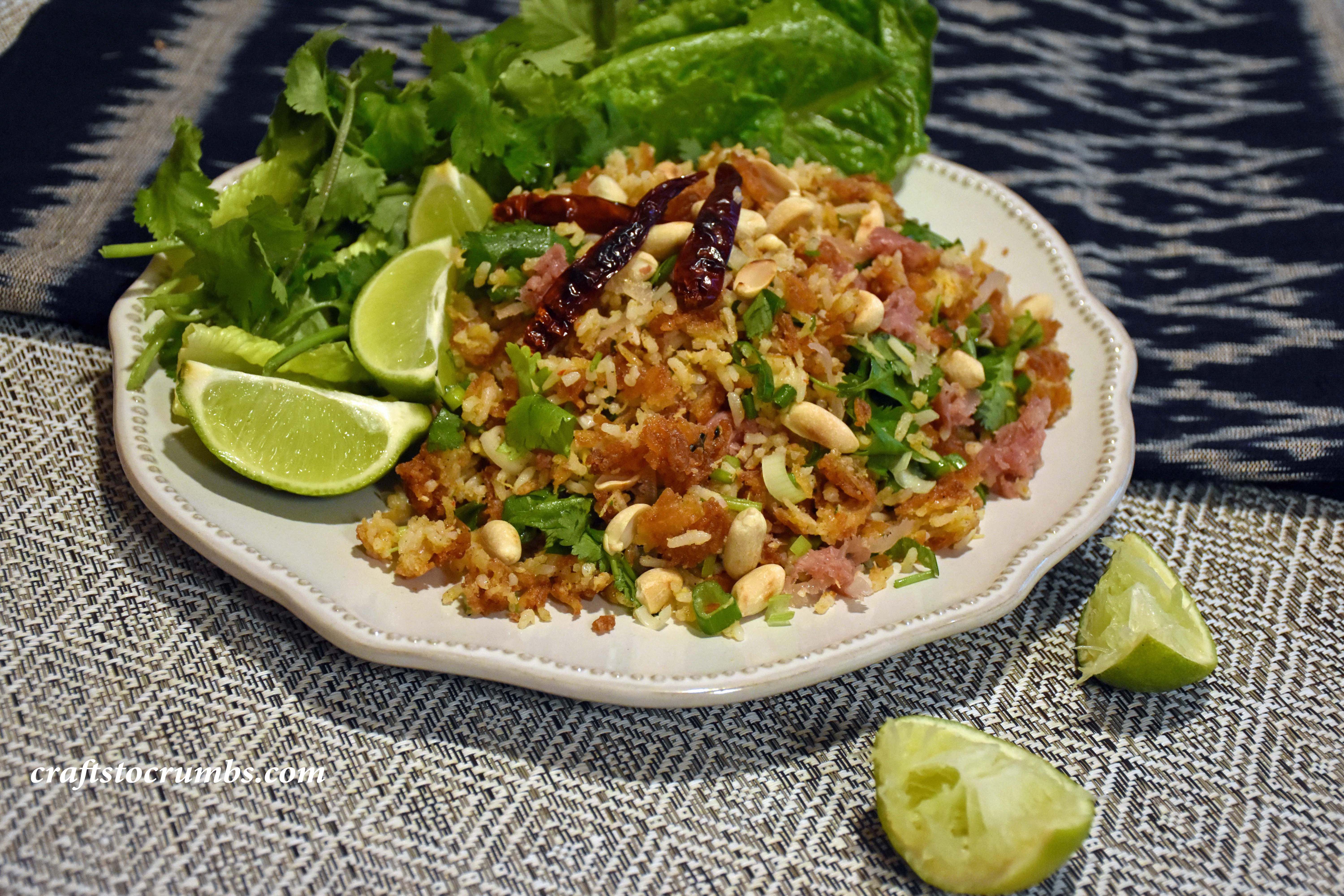Lao-Style Ragout
If you are familiar with the geo-political history of the Southeast Asian region, you may know that there was a period of French colonization in the area from the late 1800s until the mid-1900s. Until this day, you can find vestiges of French influence in the region. There are notable examples especially in cuisine, like the banh-mi, Kanom pang (Khmer) and khao-jee pate, which is the Lao version, made with a crusty baguette smeared with pate, and then stuffed with meats and vegetables.
Another dish that is exemplary of the French influence is the ragout. Ragout is a slow cooked French stew made with meat and vegetables. Not surprising, this quintessentially French stew made its way to the protectorate nations. You can find beef stew versions like Bo Kho in Vietnam. In Laos, it is simply known as ragout. Some may spell it ragu, but it is not to be confused with the Italian sauce, ragu.
Of course, the Southeast Asian versions of ragout are packed with the bold spices and aromatics that are common in the area. The first time that I tasted ragout was at my cousin’s wedding many years ago, when I was a teenager. I didn’t know what it was and thought it was the strangest and most addicting “curry” that I had ever tasted. The only thing I knew was that I wanted more bread to keep dipping in that creamy goodness. I later found out it tasted like curry because of the spices, and I have spent many years trying to create that ragout flavor. I have not tasted another like it. The person who made that batch had moved back to Laos and is not in touch with us anymore. ::sigh::
After many attempts, I’ve finally developed a version that I want to keep dipping bread in. Although, I think it’s still slightly different from the first ragout that I tasted, I am quite satisfied with this version and will happily eat it every day for week, which I have done this past week. This is coming from someone who eats red meat only occasionally, so that’s something.
Notes:

Size Matters – the size of your vegetables matters. If you want big chunks of carrots and potatoes left in your stew when you serve it, you’ll need to cut them into larger pieces. Smaller dices and cuts of the vegetables will get cooked down and will essentially flavor and thicken the stew.
Aromatics – for the aromatics like lemongrass and ginger, I minced half and kept the other half large. You can mince them all and add some to the meat when marinating and add the rest later to the pot. I like the larger pieces in the stew itself because this is my way of flavor control. When I feel that the aromatics have infused enough flavor, I can use a pair of tongs and remove them. I do this for most of my stocks and broths. For pho, I will leave the star anise in the broth for only a short amount of time. The spice is too much for me and I can easily take it out when it’s done. Same here.
Wine and Fish Sauce – (How often do you see that as a heading?) You may have to adjust the seasoning to balance out your wine. The dryness and sweetness will impact the dish. The best practice is to taste as you go. You can adjust the stew after adding all the ingredients. Less is more. Start with less and add more if needed. If you’ve added too much fish sauce, you can’t take it back out.
Coconut milk – coconut milk is my addition. IMHO, it rounds out the flavor of stew. You can serve the stew after you’ve reduced it without the addition of coconut milk. It is complete once the meat is cooked and falls apart easily. In my recollection of the first ragout that I had, I felt that the stew was creamy and that fact that I mistook it for curry also hinted that it may have had coconut milk in that version. I ladled out a small bit of the stew without the coconut milk before adding the coconut milk to the rest and did a side-by-side taste test. It was unanimous in our household. The version with the coconut milk won the taste test. If you are unsure of this addition, you can do the same. Add a little bit of coconut milk to a little bit of the stew and do and side-by-side and you decide whether you want to add it to the rest of the stew. At the end of the day, you are the one eating it.
Water – you can use about half a cup less water and this may save a little bit of time since you may not have to reduce the stew. But other variables such vegetables and how much they have cooked down will impact this. See note on “Size Matters.”
Lao-Style Ragout
Time: 2.5 hours
2 lbs. Beef Tender Roast (or any other roasting cut), cut into 1-inch pieces
2 teaspoon 5-spice
1 tablespoon brown sugar
1 inch ginger, divided half minced and half sliced
4-5 cloves garlic, minced and divided
2 stalks lemongrass, divided – mince half of one stalk and twist/bruise the rest
1 small onion, diced
1 Chinese cinnamon stick
2 Thai chilies, sliced or torn in halves
2 ½-3 tablespoons, fish sauce – divided
1 tablespoon tomato paste
1 cup tomatoes, diced or halved (plus more if desired)
1 cup (236 ml) red wine
2 cups (~473 ml) water (or less depending on amount of vegetables)
1 cup coconut milk (optional)
2 large carrots, roughly chopped
1-2 russet potatoes, roughly chopped
1 tablespoon canola oil
Baguette or rice to serve as accompaniment.
• In a medium bowl, add the meat, 1 tablespoon minced garlic, 1 tablespoon minced ginger, and brown sugar. Mix before adding 1 tablespoon of fish sauce. Let marinate for 10-15 minutes.
• In a Dutch oven or heavy bottom pot over medium-high heat, add 1 tablespoon of canola oil. Once the pot is hot, add the marinated meat. Sear the meat on all sides.
• Then add the diced onion, sliced ginger pieces, cinnamon stick, and the 1 ½ stalks of lemongrass that have been bruised and twisted. Let cook until the onion has become translucent. Add the remaining minced garlic and Thai chilies. Cook until fragrant, about 30 seconds or so.
• Add 1 ½- 2 tablespoons of fish sauce depending on the sweetness of your wine. I would add 2 tablespoons if you are using a sweeter wine.
• Next, add the tomato paste and tomatoes. Followed by the carrots, and russet potatoes. Cook for a couple of minutes.
• Deglaze the pot with 1 cup of red wine.
• Add water and bring to a boil. Reduce the heat to low. Cover and cook for about 1.5 hours.
• After 1.5 hours, remove the cover, and reduce the liquid for another 30 minutes or so. The meat is done when it falls apart easily.
• You can serve as is at this point.
• Or if you like, add 1 cup of coconut milk. Bring the stew back to a boil. Turn off the heat. (Creamy version with coconut milk is my preferred version).
• Serve over rice or with baguettes.
Discover more from Crafts to Crumbs
Subscribe to get the latest posts sent to your email.



